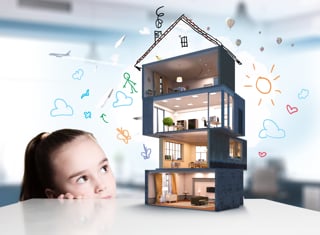Airborne allergens extend to an all-year challenge

Pollen and other allergens go from seasonal to all-year-round. We are witnessing a clear shift in the airborne allergens being more aggressive every year. What was once a seasonal problem has become an almost continuous challenge, with increasingly more severe effects on people. We used to know when irritation from pollen was about to happen as it was a seasonal issue, but nowadays, airborne allergens are bothering us all year round. And with these changes comes a constant exposure to allergies, as people can no longer 'escape' by staying indoors and waiting it out.
Pollen and allergies increasingly affect people's daily lives
Climate change extends and intensifies the allergy season. These effects can also be based on regional differences, for example, typically pollen would be washed away regularly in locations with seasonal rains, but nowadays there are much drier seasons with less rain in these regions.
Constant exposure to pollen affects people with chronic and heavy allergies; their physical health and mental well-being are affected, and their regular routines are disrupted. Some people's routines have changed – both seasonality-wise and everyday habits, as nowadays, the allergies brought by pollen and other allergens have become daily issues. People who are greatly impacted are the ones who need to shower more often, always change clothes and wash their faces after every outdoor activity. There is also additional stress and time pressure, due to increased cleaning, wearing protective masks and staying indoors for prolonged periods.
Long-term effects are even worse. Allergies can often worsen at night, disrupting rest and thus impacting sleep quality. Hence, people feel tired and less productive the next day. Chronic allergy symptoms can also affect mental health, increasing anxiety, frustration and even depression, all reducing overall well-being. There might also be a need for regular medications and frequent medical visits to relieve allergy symptoms, which can burden people's finances. When people avoid being outdoors, exercise less and avoid socialising, in short, cut out joy and happiness from their lives, it can more easily lead to a reduced quality of life.
Strategies improve indoor environmental quality in response to extended pollen seasons
Buildings must be better adapted to help reduce indoor pollen. This starts with tight building envelopes with airtight windows and doors to keep pollen out. It continues with innovative ventilation systems with controlled airflows and better filtration methods, such as high-quality filters and air cleaning systems. Constant maintenance of building ventilation systems, regular changes of air filters and more such measures are essential.
There is a hidden link between allergens and resilience
We need to change the framework by altering our thinking that indoor spaces are not just providing safe shelters for us, but are critically important for our health.
We have to examine the problem individually and holistically.
- Future-proofing our homes and making them adaptable to environmental changes, such as all-year-round allergy seasons, can help people feel secure and provide control in uncertain times.
- We need to be more aware, and more information is necessary regarding outdoor forecasts, public health communication, and monitoring of airborne allergens.
- To improve long-term liveability, we must focus on resilient principles and design buildings that can withstand weather extremes and environmental stressors like pollen and other airborne allergens.
- We can use green resilience and create landscape design by integrating low-allergen species in city plantings and creating green spaces serving as barriers against pollen and other allergens so that they can protect us outdoors.
- We must examine how people can individually cope with allergens and link this to building resilience and our society.
- Building community resilience by managing allergies as a shared task for all people and all spaces to care for – at schools, in workplaces and in public buildings.
The crucial questions are: Are we ready for changes in allergens, and are our buildings resilient enough to protect us? The topic of resilient buildings often focuses on climate and weather-related disasters, technological and infrastructure failures, human-caused events and global health outbreaks, but we need to start thinking about resiliency not only as the extremes mentioned above; thus, resilience must also address health-related everyday environmental stressors. We need to build up the resilience in buildings for people, as the buildings are here forever and for us, to protect people's health every day.
Interested in this topic?
Want to know more about what other outdoor pollutants affect our health and well-being? Our website has more information about 'Air pollution'.




